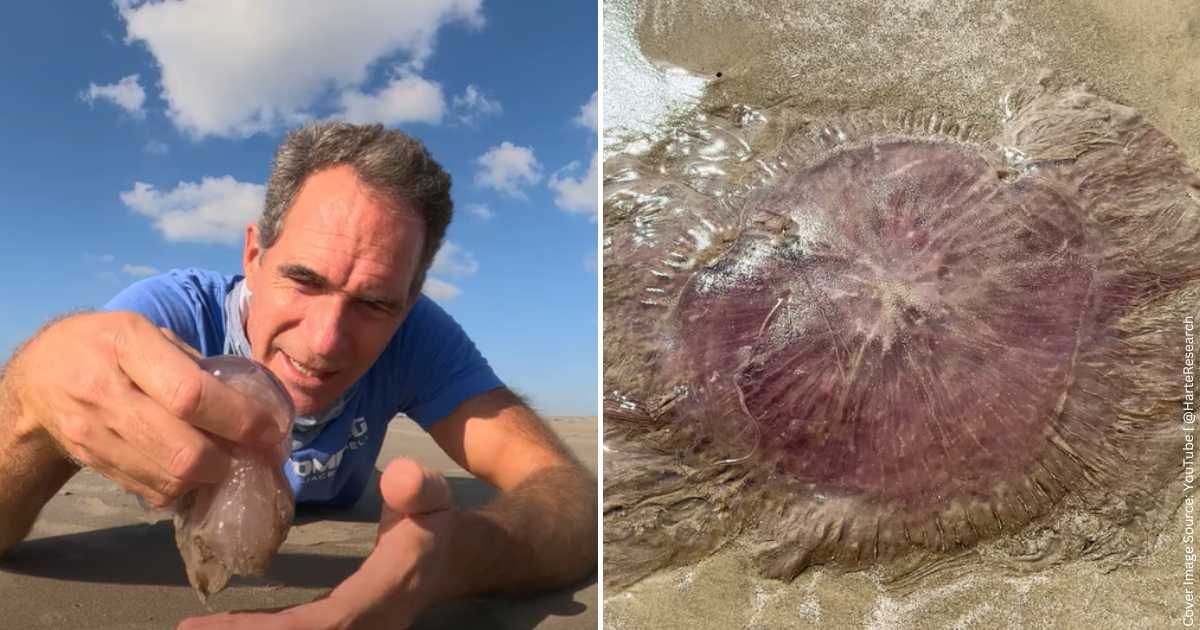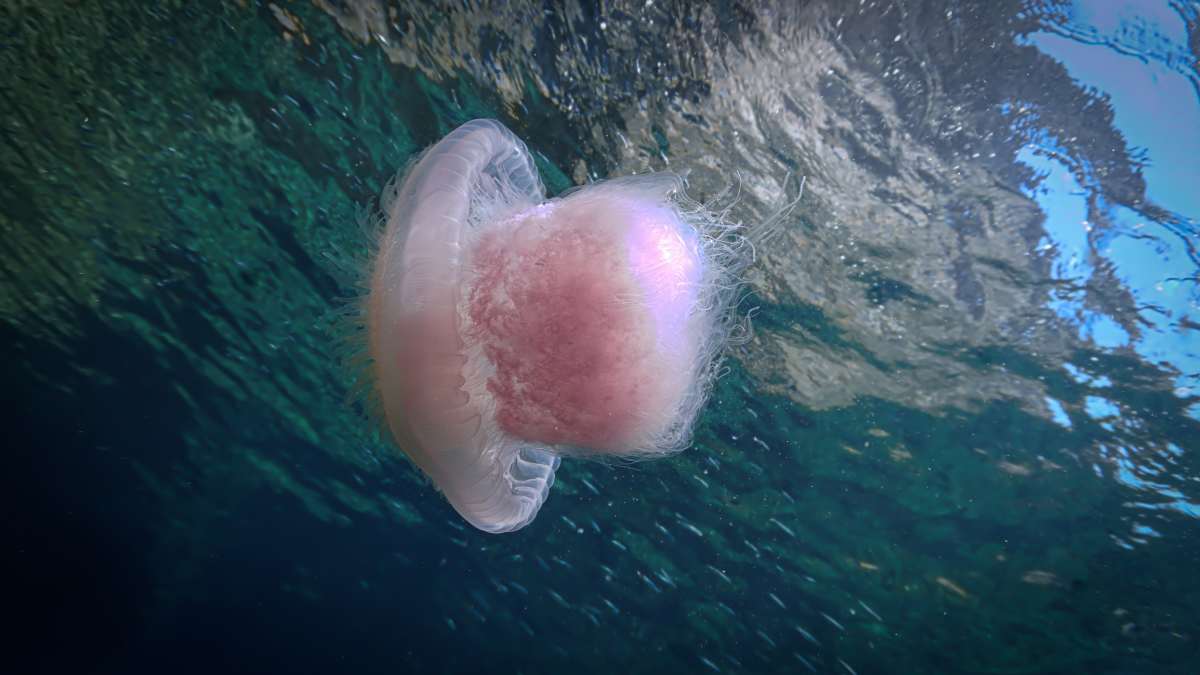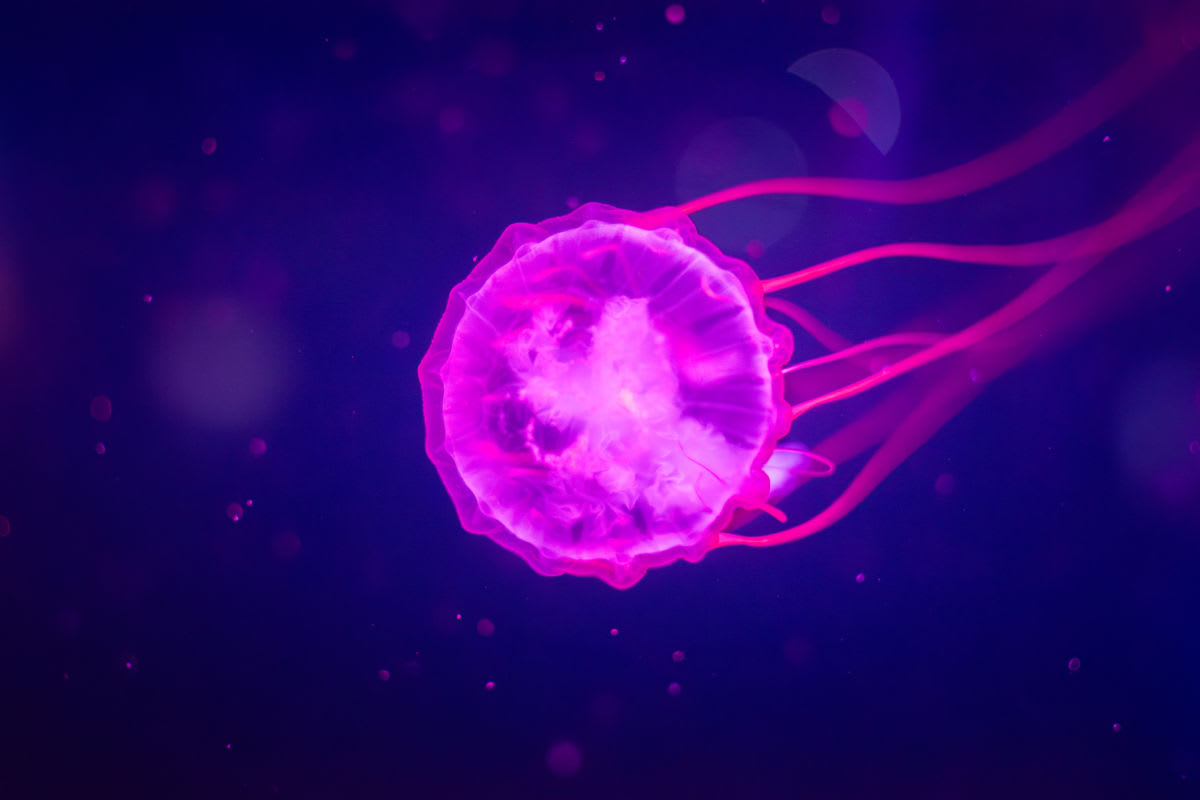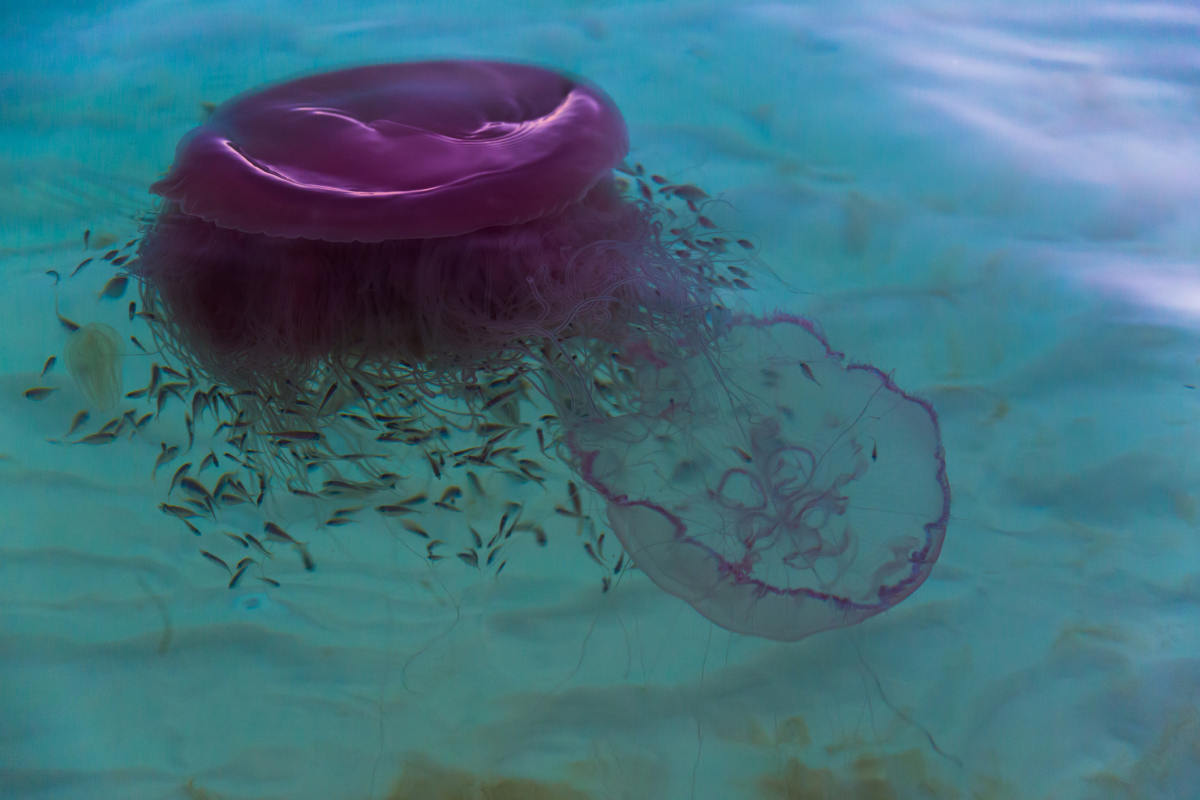Dozens of Rare ‘Pink Meanie’ Jellyfish Wash Up on Texas Shores — and Experts Know Why

In late September, Jace Tunnell, a researcher from Harte Research Institute, embarked on a beachcombing trip to Texas’s Port Aransas. Flanked by miles-long stretches of golden sands, the beach's warm waters revealed something stunning to him- a semi-transparent creature shimmering pink. This creature's long, impressive tentacles were wrapped around a moon jellyfish, gripping it as it chowed it down. A little more investigation revealed to Tunnell that this glowing creature was a “pink meanie” jellyfish. Lately, these jellyfish have been washing up often on the shores of the coast of Texas.

Dubbed Drymonema larsoni by marine scientists, these giant jellyfish can weigh over a whopping 50 pounds, with tentacles so colossal that they can reach up to 70 feet, as Tunnell also pointed out in the video. As they swim and glide, they appear like “cotton candy,” their vibrant, pink color highlighted in contrast against the blue-green water. But once they wash up on the shores, they start losing their pink sheen, making it difficult for beachgoers to distinguish them from those slimy mats of moss or algae splattered on the sandy floor. Also, their power.

These beauties are made to survive in the water. So, once they wash up on the shore, a variety of seabirds hovering around or crabs prowling near the rocks catch sight of them. It doesn’t take too long for these lurking animals, like turtles, fulmars, and crabs, to chomp down the jellies. Despite being predators, the pink jellies haven’t yet figured out a strategy to defend themselves. They are relatively new residents here. It was only in 2000 that scientists first spotted the pink meanies in large numbers off the Florida Keys, according to National Geographic.

At that time, they misidentified them with another type of fish called lion’s mane jellyfish. But in 2011, a DNA analysis revealed that they were a new species, never observed before on Earth. The species was then assigned the scientific name, Drymonema Larsoni, dedicated to the name of Ron Larson, a biologist who conducted the early research. They can remain undetected by the human eye for years. First, because they live in isolated populations. Second, their unusual life cycle makes it difficult for them to come to human notice. Their fertilized eggs drift down and settle on the seafloor, where they turn into “polyps,” as explained by Animal Fact Files.

The jellyfish remain in this “polyp” phase for years to come, until the conditions become optimal. Then, the polyps burst to produce clones of themselves, birthing jellyfish. They prefer their favorite food over other meals: moon jellies. “Whenever we have a lot of moon jellyfish, these will show up,” Tunnell explained in the video. “When the moon jellies are there, these are eating on them. Once the moon jellies are gone, you’re not going to find them anymore.” Without the presence of moon jellies, the pink meanies “die off real quick,” Tunnel told CBS News. The pink meanies also disappear when the temperatures turn cold, Mark Fisher, science director for the Texas Parks & Wildlife Department Coastal Fisheries Division, told KSAT-TV.
Watch the video here.
But at the time, it was still the onset of fall, Tunnell successfully discovered dozens of these colorful predators basking in the wild just over the 10 miles of the beach, apart from the one at Port Aransas marina. While he picked up one of them from the sand, it stung his hand. His fingers, he said, started to tingle as the jelly stung them with its tentacles. “Don’t worry, it’s only a mild sting, but you’ll see it all on camera,” he wrote.
More on Green Matters
This Tiny Glowing Jellyfish in the Ocean Reveals an Incredible Secret to
Biologist Stumbles Upon an Incredible Marine Creature That Reverses Its Age and Stays Immortal
Scientists Create Habitats to Revive Population Of ‘Living Dinosaurs Of The Fish World’ in Minnesota